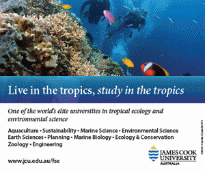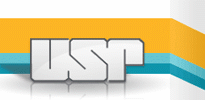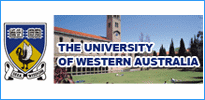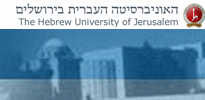Iceland: Iceland Education Profile
2010/11/02
Iceland Education Profile
The system of education in Iceland is divided in levels: playschool, compulsory, upper secondary and higher, and is similar to that of other Scandinavian nations. Education is mandatory for children aged 6–16. Most institutions are funded by the national; there are very few private schools in the country. Iceland is a country with gymnasia.
A fundamental principle of the Icelandic educational system is that everyone should have equal opportunities to acquire an education, irrespective of sex, economic status, residential location, religion, possible handicap, and cultural or social background. ”
The Ministry of Education, Science and Culture has the jurisdiction of educational responsibility. Traditionally, education in Iceland has been run in the public sector; there is a small, although growing, number of private education institutions in the country. Over the years, the educational system has been decentralised, and responsibility for primary and lower secondary schools lies with the local authorities. The national runs upper secondary schools and higher education institutions.
The Ministry issues the National Curriculum Guidelines. The National Centre for Educational Materials publishes educational materials for education institutions, and issues them free of charge. The Educational Testing Institute is the country’s sole examination board; responsible for issuing and grading national examinations.
There are 192 institutions catering for compulsory education, 42 schools for upper secondary education and 9 higher education institutions.
History
The oldest gymnasium in the country is Menntaskólinn í Reykjavík, which traces its origin to 1056, when a school was established in Skálholt. The school was moved to Reykjavík in 1786, but poor housing conditions forced it to move again in 1805 to Bessastaðir near Reykjavík. In 1846 the school was moved to its current location, and a new building was erected for it in Reykjavík.
The University of Iceland was the first higher education institution in the country, and was established on 17 June 1911, uniting three former Icelandic schools: Prestaskólinn, Læknaskólinn and Lagaskólinn, which taught theology, medicine and law, respectively. The university originally had only faculties for these three fields, in addition to a faculty of humanities. The first rector of the university was Björn M. Ólsen, a professor in the faculty of humanities.
Levels
The Icelandic education system comprises levels: playschool, compulsory, upper secondary and higher
Playschool
Playschool or leikskóli, is non-compulsory education for those under the age of, and is the first step in the education system. The current legislation concerning playschools was passed in 1994. The Ministry of Education, Science and Culture is responsible for the policies and methods that playschools must use, and they issue the National Curriculum Guidelines. They are as well responsible for ensuring that the curriculum is suitable so as to make the transition into compulsory education as easy as possible. However, the Ministry does not implement the regulations and guidelines; instead this is the responsibility of the local authority, who fund and administer playschools. In addition, the local authority employs representatives who supervise the playschools’ operation.
Parents must pay for their children to attend playschools. Around 30% of the costs of running the institutions are covered by these fees. Private playschools’ fees can be around 10–20% higher than those of public institutions. Almost amount private schools receive some municipal funding.
The buildings are often purpose-built on a site where around 30-40m² of playing space is available for each child in the playground. Around 6 m² per child is allocated indoors. The institutions are intended to be mixed sex. Playschools are intended for children under the age of; the youngest children to attend are at least years old. Children of single parents and students are given priority, and in some cases children with a handicap are as well given priority. In the majority of cases, the children are divided into age groups, but in some smaller communities these may be grouped together.
Children attend playschool for a minimum of and a maximum of nine hours per day.
Compulsory
Compulsory education or grunnskóli (lit. “basic school”), is the period of education which is compulsory for amount. The legislation concerning compulsory education was passed in 1995, and in 1996 municipalities took over the running of compulsory education. It comprises primary and lower secondary education, which often takes place at the same institution. The law states that education is mandatory for children and adolescents between the ages of 6 and 16. The school year lasts nine months, and begins between August 21 and September 1, ending between May 31 and June 10. The minimum number of school days is 170, but after a new teachers’ wage contract, this will increase to 180. Lessons take place days a week.
Responsibility lies with parents for making sure that their children attend and register at school. The law states that it is the responsibility of the municipality to give instruction and fund institutions (this includes teaching, substitute teaching, government and specialist services), and provide special education if required. There are no entry requirements for pupils, and the acceptance rate is 100% at years of age.
Pupils have the right to attend a school in the area in which they live. The national requires that the school integrates handicapped pupils into mainstream education.
The national is responsible for assessing institutions to make sure that they are operating within the law and the National Curriculum Guidelines. They as well produce educational materials, and implement educational law and regulations.
Compulsory education is divided into ten years. Schools which have amount ten years, year to, and years eight to ten are common. Those schools which teach from years eight to ten often have a wider catchment area. The size of institutions is widely varied. In the Reykjavík urban area, schools can be up to 1200 pupils in size. In rural areas, schools can have fewer than 10 pupils, and around 50% of schools have fewer than 100 pupils. Amount compulsory education institutions are mixed sex. A lot of counselling services are available, including help with studies and specific subjects; psychological counselling is as well available.
Each school must follow the National Curriculum Guidelines, but exceptions are made for schools with special characteristics. The school is required to create a school working plan and an annual schedule, organise teaching and pupil assessment and to provide extracurricular activities.
Nowadays, the National Curriculum Guidelines have provisions for those learning Icelandic whose mother tongue is a foreign language and deaf and hearing-impaired pupils. Pupils are expected to keep up with the pace of teaching; however those students who are struggling receive remedial teaching without being moved from most of their classes. An emphasis is made on providing a variety of teaching methods.
Assessment
In Iceland, assessment and evaluation of pupils is conducted internally, and is not standardised between different institutions. Pupils are given regular reports to year their evolution; however the way in which this is done varies between schools. For example, a numerical year could be given, or an oral and written assessment may be given.
Conversely, there are nationally co-ordinated exams on offer at the end of the compulsory education period. They are optional. In school year 2001–2 students were able to choose between examinations, Icelandic, Danish (or Norwegian), English, mathematics and natural sciences. In school year 2002–3, a social sciences option was as well added. The Education Testing Institute compiles and years these examinations. The marking scheme ranges from to ten, ten being the highest, based on referenced assessment criteria. Their principle purpose is to help ease the transition into upper secondary education and help the pupil to choose a course of study. Pupils are awarded a certificate with their marks at the end of the compulsory schooling period.
In addition to pupil assessment, the law requires that schools implement some form of self-evaluation on the quality of their services and to make sure that institutions are operating inside the law and within guidelines. Schools are assessed externally each years by the Ministry of Education, Science and Culture.
Teachers
Similar to primary education in other nations, from years to, the same teacher teaches the pupils amount of their subjects. From year eight upwards, pupils receive teaching from a number of different teachers (this marks the boundary between primary education and lower secondary education). Groups may be mixed around year by year.
Primary school teachers are general teachers who have received their training at either the Iceland University of Education or the University of Akureyri. The typical course lasts three years. Lower secondary teachers may as well be trained at the University of Iceland. A BA or BS degree is required in this situation. The courses are designed to be both academic and practical. Municipalities are responsible for the employment of teachers. Optional in-service teacher training courses are offered on an annual basis.
Upper secondary
Upper secondary education or framhaldsskóli (lit. “continued school”), follows lower secondary education. These schools are as well known as gymnasia in English. It is not compulsory, but everyone who has had their compulsory education has the right to upper secondary education.The typical course length is years, for students aged between 16 and 20. The length of the course can vary, especially in vocational courses. This stage of education is governed by the Upper Secondary School Act of 1996. Like amount other schools in Iceland, upper secondary schools are mixed sex.
Students do not have to pay tuition fees, but they must pay an enrolment fee and are expected to buy their own textbooks. Students who enrol on vocational courses pay a portion of the costs of the materials that they use.
Amount students have a right to enter upper secondary education when they turn sixteen. Around 90% of students leaving lower secondary education enter into upper secondary education; however there is a notable drop out rate. There are specific entry requirements for different courses, but as amount students have the right to this sort of education, a general programme of study is available for those students who may fail to meet requirements.
The school year lasts for nine months, and is divided into terms: autumn and spring. Students attend around 32–40 lessons a week, each lasting 40-60 minutes. This can vary drastically between institutions.
There are around forty gymnasia in the country; sizes vary as much as the primary schools. The major gymnasia have over 1,500 students—the smallest, less than fifty.
The gymnasia can be divided thus:
* grammar schools—offering-year long programmes of study, ending with matriculation exams;
* industrial-vocational schools—theoretical and practical courses in various trades;
* comprehensive schools—offering a mixture of courses, has qualities of both a grammar school and an industrial-vocational institution, in addition to specialised vocational programmes;
* specialised vocational schools—programmes of study for specific trades and careers.
The law requires that there are academic, vocational, artistic and general programmes of study, amount of which lead to higher education.
The gymnasia have forms which operate on a unit-credit system, that is to say a term is divided into course units, each of which is worth a certain number of credits. Students are as a result able to regulate the speed of their education based on their personal circumstances. This system is used in most upper secondary institutions in Iceland.
A lot of institutions as well offer evening classes targeted at adults, some of which are on-a-par with their daytime courses. Distance learning is as well offered at most schools.
Counselling services are as well offered, like those of the compulsory education institutions.
Assessment
Examinations are taken at the end of each term as opposed to at the end of the year. Final years are often based on continuous assessments and assignments; however some courses do have final exams. There were no nationally co-ordinated exams in upper secondary education until school year 2003–4, when certain subjects were introduced. Institutions are as well required to self-assess, like compulsory education institutions they are assessed externally each years.
Teachers
Upper secondary teachers are required to have completed years at university, at least years of which must have been devoted to a major subject, and at least of which devoted to teaching methodology and skills. Vocational teachers must be qualified in their particular discipline, or must be a master craftsman in their trade, and have at least years of experience.
In-service training courses are as well offered. Teachers are paid by the national but hired by the individual school.
Higher education
The final level is higher education, or háskóli (lit. “high school”). There are nine such institutions in the country, most of which are run by the national. The first institution, the University of Iceland, opened in 1911, and is still the principal higher education institution in the country. In recent years, however, additional universities have opened across the country, widening the range of choices available. Legislation concerning higher education institutions was passed in 1997, which includes a definition of the term háskóli (to include universities which do not carry out research). There is as well separate legislation in place for each public institution, defining their role in research and general organisation. Private and public universities both receive funding from the national.
The government of each university is divided into the Senate, the rector, faculty meetings, faculty councils and deans (however, some universities are not divided into faculties). The Senate ultimately makes decisions on the running and organisation of the institution, and formulates policy. The national will formulate a contract with the university, defining the institution’s objectives and the amount of funding that the national will give to the institution.
Despite the growing number of higher education institutions in the country, a lot of students decide to pursue their university education abroad (around 16%, mostly in postgraduate studies).
The academic year lasts from September to May, and is divided into terms: autumn and spring.
Admission
Most undergraduates will have had to pass some form of matriculation exam to get into university; however those with sufficient work experience may be admitted in some cases. Vocational and technical courses have looser requirements, only stating that the applicant have some sort of experience in their chosen field of study. Institutions are free to set their own admission criteria. Registration for potential students takes place from May to June each year; however the application deadline for foreign students is before : March 15.
Student finance
In national-run institutions, students only need pay registration fees; there are no tuition fees. Private institutions, however, charge fees. Amount students are eligible to some financial support from the Icelandic Student Loan Fund; the exact amount depends on their financial and personal situation. The student must begin to repay this money years after commencing their study programme. In addition to Icelandic students, students from the European Union or EEA-EFTA member states are as well eligible to apply for loans, if they have been working in their trade in the country for at least year.
Annually there are a limited number of scholarships available for foreign students to study the Icelandic language and literature at the University of Iceland, offered by the Ministry of Education, Science and Culture.
Grants are available for post-graduates in research universities, which are awarded on the basis of joint submission from student and professor, and approval from the respective faculty.
- Iceland News
-
- AFGHANISTAN: UNWTO: International tourism – strongest half-year results since 2010
- ALBANIA: US LNG exports make European market more competitive
- AFGHANISTAN: Higher earning Why a university degree is worth more in some countries than others
- ALBANIA: Europe in 2016: Terror fears, migration, politics. But economy may turn a corner
- AFGHANISTAN: Global growth will be disappointing in 2016: IMF's Lagarde
- AFGHANISTAN: Revised IMF forecasts signal gloom on global economic outlook
- Trending Articles
-
- CHINA: China welcomes Guinea to take part in Belt and Road Initiative
- CAMEROON: Poor End of Year Results for Cameroon Students
- CHINA: Chinese-supported infrastructure projects change Zambia's landscape
- UGANDA: Ugandan Govt Starts Verifying International Academy Teachers
- AUSTRALIA: Queensland Bauxite Gains State Approval of Mineral Development Work Program
- UNITED STATES: Spotify, Hulu target students with discounted bundle













